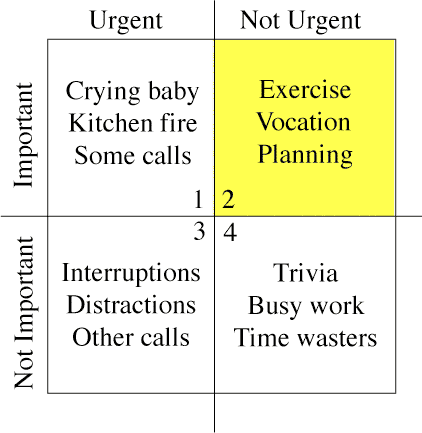Getting Ahead: How Customer Success Managers Can Be More Proactive

It’s easier to prevent a fire than put one out. Unfortunately, many customer success managers (CSMs) spend their entire days putting out fires, rather than preventing them.
While customer success is a role that works directly with customers, it is not customer support. There should be a clear division between the two teams based on how they deal with customer problems. It’s actually quite simple:
- Customer support deals with customer problems after they occur.
- Customer success deals with customers problems before they occur.
Nevertheless, CSMs constantly fall into a reactive mode. A customer is struggling to onboard and might churn, so the CSM jumps in and walks the customer through the process. That’s support’s job, but since the CSM owns the retention number (usually), he/she feels compelled to act.
A proactive CSM would delegate that task to the support team and then adjust the onboarding process to solve the challenge for future customers. Proactive CSMs turn everyday tasks into processes that are quick and repeatable. When a problem arises that the CSM has seen before, he/she doesn’t have to consider how they’ll deliver a solution before delivering it.
If you find yourself saying “I’m sorry” to customers often, your customer success program needs work. In this case, you are reacting to bad things that have already happened instead of preventing them from happening in the first place.
Don’t get me wrong: in a customer-facing role, there will always be a few apologies. That’s just the nature of the job. By discovering how your customers realize the most value with your product and helping them achieve it, you’ll limit the number of apologies.
I’m sure you understand the benefits of working proactively, as more autonomy means less stress, fewer mistakes, etc. But, the switch from reactive to proactive is tough for CSMs. Here are some ways you can make that transition.
1. Block off time for proactive work

In order to get ahead, you need time. That sounds like a catch-22, and it is, but you have to break free. If you find yourself putting out fires every day from the moment you get to your desk until the moment you leave (exhausted), you’ll never combat the real problem. You need to give yourself time to build solutions.
Block off a portion of your day for deep work. Deep work is focused, uninterrupted work. You are not available for your co-workers. You are not available for customers. Your phone is off, Slack/Trello/Asana/whatever is closed, and there’s a sign on your door that says “Leave me alone until 11 AM,” or whatever time works for you.
In a perfect environment, we would all have four hours a day for deep work where no one bothers us. Unfortunately, that isn’t realistic, especially if you’ve neglected hiring more customer success managers until the last minute, or if you’re the first CSM in an organization.
Start with just one hour a day. As you create proactive solutions, you’ll free up more time for deep work. Depending on the scope of your customer success program and the nature of your work, you should be able to open a large part of your day.
Recommended reading: 5 Habits That Will Make You More Productive Right Now
2. Understand your customer really well
This is a piece of advice you hear everywhere, but it’s worth mentioning. Before you start building solutions, automations or processes, you need to understand your customer well. If you don’t understand your own customer, you’ll probably create a “solution” that doesn’t solve anything.
For instance, let’s say you built a customer health score that considers the number of user accounts the customer opens. A customer who creates many user accounts for their team must be healthy, right? But, if you didn’t know that most of your customers only create one account to integrate your product with tools, then your health score will never be accurate.
In that example, a clear understanding of the customer was required to create the best health score. Without that type of knowledge, any solution that you create could be inaccurate or useless.
3. Define a purpose and stick to it
I see a lot of customer success teams buried in work, struggling to survive because the team doesn’t have a clear purpose. You can’t be an effective customer success team (or any team in a SaaS organization, for that matter) until you decide why the team exists in the first place.
Generally, customer success doesn’t get to decide its purpose (though its input is valuable). That decision should come from the C-suite. In most cases, CSMs are in charge of the retention number.
Sometimes, however, they can have more niche purposes, like the management of onboarding or upsells, or broader purposes, like the management of general customer satisfaction. It’s OK if the CS team has a purpose with multiple objectives, but those objectives should be clearly defined.
Once customer success is given its purpose, the team needs to focus on it. If your CS team is responsible for retention, they shouldn’t be selling service expansions. If you find yourself managing functions or solving problems that are outside of customer success’ scope, redirect yourself back to your purpose. This could potentially free up hours in your day.
4. Turn your day into a game plan
If you spend your day just letting things happen to you and responding to other people, you’ll never get ahead. Instead, you need to prioritize.
Spend 15 minutes each morning planning your day. Put the task you absolutely want to complete at the top of the list. This will keep you focused as you move through your day. If you’re interrupted by a meeting or phone call, you’ll know exactly where to pick up.
I recommend using Eisenhower’s Urgent/Important Matrix. Categorize each task into one of the four boxes of this matrix then work on them in order according their numbers (start with 1, then 2, etc.). If you use this tactic in combination with deep work, you’ll become extra productive.

5. Evaluate your customers in aggregate with automation
Typically, CSMs are put in charge of accounts based on their annual recurring revenue (ARR). In a low-touch SaaS with lots of customers, a CSM would have more accounts under their care than a high-touch SaaS with few customers. So a CSM could potentially oversee thousands of accounts. This means that checking in with a phone call just isn’t practical.
You can evaluate your customer’s satisfaction at scale with your product by using a customer health score. This is a numerical representation of the customer’s health based on whatever variables you put into the equation. You might need some developmental help to create this type of formula, or your customer success software may do it for you.
A customer health score helps you identify problems before they loom. If a customer hasn’t used the app in a week, you would want to know why. Your score would alert you to the change.
Engaging with the customer before there’s a problem will save you a lot of time, rather than responding to a sudden emergency when the customer is threatening to cancel their service.
Learn more in this post: Are Your Customers Healthy? How to Create a Customer Health Score
6. Focus on onboarding
You can eliminate a lot of hassle by routinely improving your onboarding process. The goal of your onboarding process is to walk the user down the path from their first experience with the product to finding real value with it.
“Onboarding begins during the very first touch-point between a company and [prospective] customer,” says customer success expert Mike Silver. “From the initial touch-point, constant action must be taken by a company to ensure that the relationship with their customer remains strong, long down the road.”
A smooth onboarding process can eliminate a lot of your day-to-day hassles. Customers won’t need to interrupt you for help if they are properly trained to use the product and find it easy to realize value.
Onboarding can mean a lot of things. The scope of your onboarding process would depend on your product. Onboarding might mean a clever virtual walkthrough in the application. It might mean a video tutorial, documentation or knowledge base. Or, it could mean an on-site training week.
However you do it, use onboarding to bring your customers to a position where they become comfortable with the product and find value. If your process is comprehensive, you can solve inevitable problems on your own terms.
There’s no limit to proactivity
You won’t get ahead of those fires all at once. The best you can do is squeeze out a little extra time in each day for proactive work. It might be 15 minutes/day this week, 30 minutes/day next week, etc.
Over time, proactivity compounds. Eventually, you’ll have all the time you need to tackle the biggest challenges.
